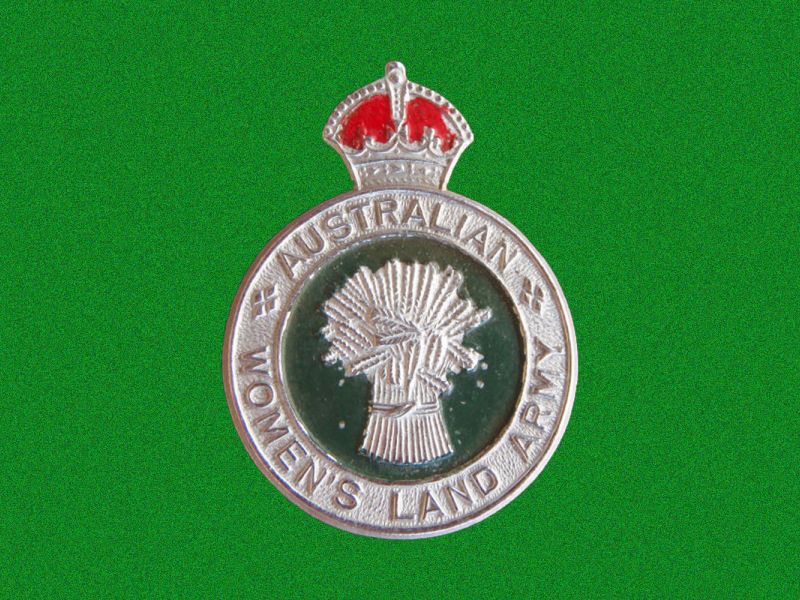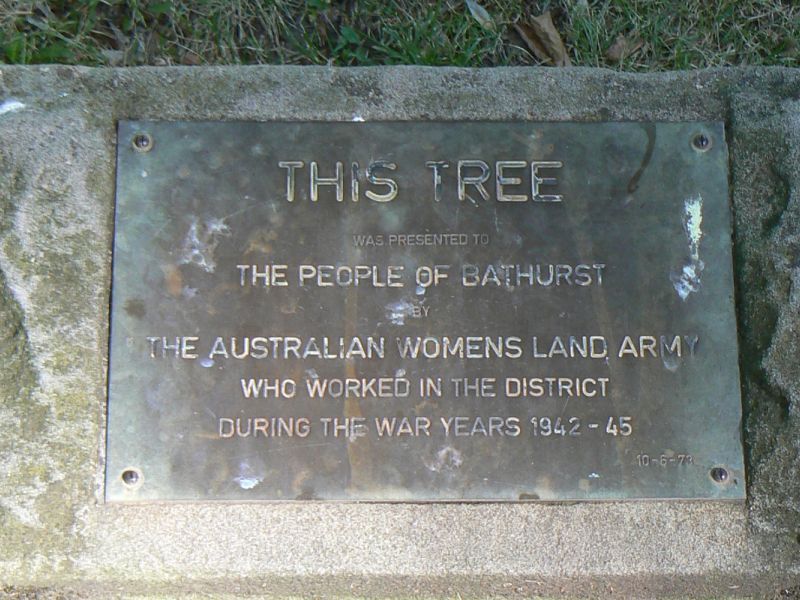The Australian Women's Land Army
The Australian Women's Land Army (AWLA) was established on the 27th of July 1942 as a way of overcoming rising labour shortages in the farming sector. After Japan entered the war in December 1941, the need to build up Australia’s armed forces had to take priority over the needs of other industries. Agricultural labour was steadily diverted to the armed services and war industry so State and private women’s land organisations, modelled on those established in Great Britain were established to help reduce the shortages on the land.
Once the AWLA was formed in July 1942 most members of the existing land armies were incorporated into the new organisation. While policy was devised by the Commonwealth Government, the organisation of the AWLA remained State-based. The AWLA was not an enlisted service, but rather a voluntary group whose members were paid by the farmer, rather than the government or military forces. Full-time members enrolled for continuous service for 12 months (with the option of renewal); and received a distinctive dress uniform, working clothes and equipment. Those not available for full-time employment but available for periods of not less than four weeks at nominated times of the year, were considered Auxiliary members. They were used for seasonal rural operations and received working clothes and essential equipment on loan.
Membership of the AWLA was open to women who were between 18 and 50 years of age and British subjects or immigrants from Allied nations. They were housed in hostels in farming areas and given formal farming instruction as many were drawn from city areas and were often unskilled in rural work. Women who were farmers, employees or relatives of land holders were not eligible to enlist. This new form of labour had to be heavily promoted to rural employees, who initially were resistant to female labour, but sceptical attitudes generally changed to praise and respect.
Enrolment numbers peaked in December 1943, with 2,382 permanent members and 1,039 auxiliary members. The average working week for an AWLA member was 48 hours. Although AWLA pay started at 30 shillings a week the women were paid much less than their male counterparts for the same work, which covered a variety of agricultural labours, such as vegetable and fruit growing, pig and poultry raising, and sheep and wool work.
Aware of the need to compete for recruits with the three women’s services, in October 1942 the Minister for Labour and National Service recommended improving the status of the AWLA by instituting it as a fourth service. The organisation was to be formally constituted under the National Security Regulations, but arrangements were not completed before the cessation of hostilities and the decision to demobilise the Land Army. As a result, members of the AWLA were not accorded the same benefits as members of the other women’s services.
The AWLA was disbanded on 31 December 1945. In 1997, many members became eligible for the Civilian Service Medal.
Sources:
The Australian Women’s Register: www.womenaustralia.info/biogs/AWE0393b.htm
Australian War Memorial website: https://www.awm.gov.au/articles/encyclopedia/homefront/land_army

 Henry C Moulds
Henry C Moulds